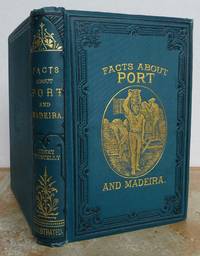
Anatomy of the Titanic.
by Tom McCluskie
- Used
- Fine
- Hardcover
- Condition
- Fine
- Seller
-
Scarborough , North Yorkshire, United Kingdom
Payment Methods Accepted
About This Item
In the original dustsheet. Binding the same as the dustsheet.
Condition: Near Fine-Collectible. Dust Jacket Condition: VeryGood. 1st Edition. Pictorial boards that match DJ. Designed by Sunita Gahir. Photography by Simon Clay. Spine straight, binding tight, pages clean w/soft tone. Not x-library, unclipped (price), unmarked. Minor shelf and edge wear to DJ. Great photos and drawings. A fine promotional book featuring excellent bandwidth photos of the construction, mechanical components and the opulent passenger spaces of the great ship together with well-executed color plates of the interior concept drawings. A comprehensive deck-by-deck tour of the most famous ship in history. Includes nearly 250 b/w photographs, plans, drawings, and cutaways. Tom McCluskie is the former Archive Manager for Harland & Wolff, builders of the Titanic, and was H & W's Technical Liaison to 20th Century Fox in the production of James Cameron's Titanic. McCluskie is also the co-author of Titanic & Her Sisters Olympic & Britannic.
I, Martin Frost, have two associations with the Titanic. The first is that Harland of the Belfast company, Harland & Wolff, who built the Titanic was born in Scarborough (where F.B.A. has its UK base) from a very distinguished Scarborough family. The second is that my family once owned Hingley's, the famous Dudley chain manufacturer, and the provider of the anchors and chains to the Titanic. More importantly, my eldest son still has Queen Victoria's Letters Patent for the world's first drop forge hammer upon which Titanic's anchors were forged along with the Titanic's 'seaworthiness certificate' both of which he has dumped in an old cupboard.
RMS Titanic was a British passenger and mail carrying ocean liner, operated by the White Star Line, that sank in the North Atlantic Ocean on 15 April 1912 as a result of striking an iceberg during her maiden voyage from Southampton, England, to New York City, United States. Of the estimated 2,224 passengers and crew aboard, about 1,500 died, making it the deadliest sinking of a single ship up to that time. The disaster drew public attention, spurred major changes in maritime safety regulations, and inspired many artistic works.
RMS Titanic was the largest ship afloat at the time she entered service and the second of three Olympic-class ocean liners built for the White Star Line. She was built by the Harland and Wolff shipbuilding company in Belfast. Thomas Andrews Jr., the chief naval architect of the shipyard, died in the disaster. Titanic was under the command of Captain Edward John Smith, who went down with the ship. The ocean liner carried some of the wealthiest people in the world, as well as hundreds of emigrants from the British Isles, Scandinavia, and elsewhere throughout Europe, who were seeking a new life in the United States and Canada.
The first-class accommodation was designed to be the pinnacle of comfort and luxury, with a gymnasium, swimming pool, smoking rooms, high-class restaurants and cafes, a Turkish bath, and hundreds of opulent cabins. A high-powered radiotelegraph transmitter was available for sending passenger "marconi-grams" and for the ship's operational use. Titanic had advanced safety features, such as watertight compartments and remotely activated watertight doors, contributing to its reputation as "unsinkable".
Titanic was equipped with 16 lifeboat davits, each capable of lowering three lifeboats, for a total of 48 boats. However, she actually carried only 20 lifeboats. Fourteen were regular lifeboats, two were cutter lifeboats, and four were collapsible and proved hard to launch while she was sinking. Together, the 20 lifeboats could hold 1,178 people—about half the number of passengers on board, and one-third of the number of passengers the ship could have carried at full capacity (a number consistent with the maritime safety regulations of the era). The British Board of Trade's regulations required 14 lifeboats for a ship of 10,000 tonnes. Titanic carried six more than required, allowing 338 extra people room in lifeboats. When the ship sank, the lifeboats that had been lowered were only filled up to an average of 60%.
Reviews
(Log in or Create an Account first!)
Details
- Bookseller
- Martin Frost
(GB)
- Bookseller's Inventory #
- FB5205 /19
- Title
- Anatomy of the Titanic.
- Author
- Tom McCluskie
- Format/Binding
- Board binding
- Book Condition
- Used - Fine
- Quantity Available
- 1
- Binding
- Hardcover
- Publisher
- PRC Publishing.
- Place of Publication
- London
- Date Published
- 1998
- Size
- 24 x31 x2cm
- Weight
- 0.00 lbs
Terms of Sale
Martin Frost
About the Seller
Martin Frost
About Martin Frost
Glossary
Some terminology that may be used in this description includes:
- Fine
- A book in fine condition exhibits no flaws. A fine condition book closely approaches As New condition, but may lack the...
- Spine
- The outer portion of a book which covers the actual binding. The spine usually faces outward when a book is placed on a shelf....
- X-Library
- A former library book, generally containing library acquisition and ownership stamped markings, and other typical indications of...
- New
- A new book is a book previously not circulated to a buyer. Although a new book is typically free of any faults or defects, "new"...
- Tight
- Used to mean that the binding of a book has not been overly loosened by frequent use.
- Jacket
- Sometimes used as another term for dust jacket, a protective and often decorative wrapper, usually made of paper which wraps...
This Book’s Categories
Also Recommended
-

Save 10% on every purchase!
Join the Bibliophiles’ Club and start saving 10% on every book.
$29.95 / Year







